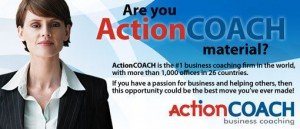26/06/2009
How cafe owners made spare time for themselves – and more money …
Wendy’s Story
Our business is Cafe Istanbul. It’s a Turkish restaurant in Wellington City, New Zealand. It’s a family-owned business that we’ve run for 11 years now. I look after the front of house, manage the staff and see to sales.
Over the last 6-months to a year, we’ve noticed a big growth in the upper end of Cuba St, where we are situated. There’s a lot more people, a lot more foot traffic, and many bars and cafes are being developed in the street.
There are also a lot of inner city apartments in our area now.

While many of our customers are students, we also cater for those between the ages of 25 and 45; we have quite a few 40th birthday parties here. We also get 21sts and even 60th and 70th birthday parties, so our customer base is quite vast.
Our cafe is very well known. Everyone in the area knows who we are and where we are. Those who haven’t been to us before will always ring up to find out. We have a lot of regular customers.
We obviously want to pitch to the people with the most money, so we’re thinking of aiming at city dwellers, the apartment people, in the next marketing campaign.
These tend to be aged 25 to 35 or 40, have a good disposable income and probably no children or dependants. They have that extra money to spend on going out.
We’re definitely considering opening up for lunch. We have done that once before and there just wasn’t enough foot traffic. But we’ve noticed in recent times that on a Thursday, Friday and Saturday (and even Sunday) there are a lot of people about and they’re all looking for somewhere to have lunch.
We faced several challenges before we met ActionCOACH, particularly regarding staffing in the kitchen (we used to import chefs from Turkey), team building with our front of house team and getting the right people.
Other challenges included putting systems in place that, perhaps, we hadn’t thought of before.
Finding the right staff had always been a big problem … we’d advertise and basically end up just having to take the first available person rather than the right person.
ActionCOACH has given me some really good information and guidelines on how to choose the right person rather than be hasty and choose the wrong person, because when running a restaurant, you need people; people on the floor and not just people who are available to work.
In the past, we were basically happy with what we made from the business. Even though we could probably have made a lot more, we didn’t try.
With putting different systems in place, like managing our booking times and getting more ‘bums on seats’, we’ve been able to increase the number of people we serve, and of course, the number of dollars we take.
So there’s definitely been a really good increase since we’ve started working with ActionCOACH.
Call us today to book a FREE Business Consultation with the nearest ActionCOACH Business Coach in your area. Call FREE- 0800 228 466
*******************************************************************************************************

22/06/2009
How many times have you played the “Whatever Happened to …” game. Wondering why a certain customer who used to buy what you have to sell doesn’t buy anymore?
Is there a reason? Or group of reasons? Has anyone ever done a study on this?
Though the years, I’ve accumulated a group of reports from different sources ranging from different sources ranging from U.S News & World Report, the Harvard Business Review, and several trade magazines to half a dozen motivational and “secrets of successful selling” articles. But (and here’s the amazing fact) they all have the same statistics.
Now whether this is one person copying what someone else has written or said or simply perpetuating a myth I’m not sure.
What we are sure of is that the statistics make sense because they worked in our business (and seeing them gave us a reason to develop a new customer-oriented marketing plan) and in other businesses as well.
Here are the numbers as repeated in books, columns, and from the mouths of let-me-tell-you-how-to-succeed speakers:
Why Customers Leave …
· 14% leave because their complaints were not solved
· 9% leave because of the competition
· 9% leave because they moved someplace else
· 68% leave for … no special reason or what we call perceived indifference …
In other words: Seven out of ten customers who used to buy from you left for … no special reason … I don’t believe that … I think there was a reason … Or a series of reasons:
I think they left because you never told them you cared…
I think they left because you never told them they were important
I think they left because you never said “Thank you” and “Please come back and shop with us again …”
Many times I have found that owners and operators are so busy minding the business they forget to mind the Customers, and in the immortal words of super salesman “Red” Motley, “Nothing happens until a sale is made”…
How many times have you walked in to the store and found no one to give you any help or assistance?
I heard the story of writer Ken Erdman tells of the time he and his wife were shopping in a Philadelphia department store … His wife found an item and brought it to the counter – but no one was there. And no one to be seen … And so Ken simply stood in the middle of the room and yelled at the top of his voice “Help! Help!” Suddenly security people appeared from everywhere demanding to know the problem…
“There’s no problem,” said Ken. “We just want someone to help us.”
The Japanese handle that by having People stationed on either side of the door when you walk into their shops … They bow and say O-kyaka-san, which roughly translated means, “You are a visitor to my home.”
Do I feel that way when I walk into your business? Is one cashier talking to another … Or a friend on the phone … Or busy fixing stock … Or … are they so busy minding the business, they forgot to mind the customer …
A retailer friend proudly showed us his new computers … He could tell us how many pairs of pink socks were sold on any given day at any given hour … His carry-home briefcase was filled with voluminous printout sheets that he read with the same interest and the newest novel by John Grisham … He would pencil in notes on the margin, make references for future buying patterns, and the store as an office away from his office at home …
His once-successful business went bankrupt …
He was so busy minding the business, he forgot to mind the Customer …
Now nothing is wrong with cleaning stock, taking inventory, and buying computers … It is to be practiced devoutly, to be admired, and encouraged. But not at the expense of the Customer … Businesses often tend to build fences to hide behind …
We did a series of seminars for banks at annual state meetings across the country. We asked each of them, “How many made more than ten officer calls last month?” (“Officer calls” mean the bank officers had to leave the bank and personally make a call on a Customer and potential Customers throughout the community.) Few raised their hand. Yes, it was written down for them to do … Yes, they knew it was important … But there were papers to read and sign and employees to watch and criticize and . . . well, there just wasn’t enough time …
We remind them to “take the time,” or the competing bank would be out asking a simple question to the Customer: “When was the last time you saw your banker?”
They were so busy minding the business, they forgot to mind the Customer …
And what of the phone call to a business questioning a bill … And the answer, “Sorry, our computer handles that.”
Really? What’s his (or her) name? Can I talk to him? If the computer is going to take care of the business, does that mean it takes care of the customer as well? Shall we set up your business like a vending machine cafeteria? Customers come in, look for the selection they want, dial their credit card number alongside the tiny window opening, and click . . . it opens for them to take what they want …
And those of you that rave about the tremendous success of home shopping on TV, consider this fact: The total sales (while impressive) make up less than 3 percent of the total retail in the United States …
· People are lonely … They want someone to talk to …
· People are critical … They want to kick the tires and touch the fabric …
· People are social … They want to “get out of the house” and go somewhere . . . the local mall or business is fine …
And so the next time the desk piles up with figures to beat and merchandise to buy and salespeople to hire, make sure it does not take up the greater part of your day … That belongs to the Customer outside your door roaming around looking for help in buying an item …
Take care of your Customer. If you do, you will have a business to take care of …
***article from bradsugars.com***
Do you have what it takes to become a Business Coach?
FIND OUT NOW

ActionCOACH Business Coaching New Zealand
…at ActionCOACH we give ordinary people extra ordinary opportunity to have a more abundant life.
To know more Call us TODAY- 0800 369888
17/06/2009
10 Ways To Get Your Ads Or Messages Noticed
Do you post to message boards, e-mail discussion
lists, classified ads sites, FFA sites or newsgroups?
People will usually read the subject line before they
read your ad or message, so it’s important they get
noticed. Below are ten simple, but powerful tips to
get your ads or messages noticed.
1. Use extra white space creatively in your subject
line. You can add extra blank spaces between your
words or letters.
2. Combine capital letters with lower case letters.
Use all capital letters in every other word or use a
capital letter between every other lower case letter.
3. Add text symbols in your subject line. You could
use them between words and letters. Start and end
your subject with a text symbol. ( *, $, >,{,] )
4. Begin your subject line with the word “STOP!”.
People have been trained their whole life to stop
what they are doing when they see that word.
5. Ask people a question in your subject line. We
all went to school and were repetitively branded to
answer questions.
6. Use the word “FREE” in your subject line. Your
offer should be attractive to your target audience.
It could be free information, software, trials, etc.
7. Begin your subject line with an “online smile :)”.
People use smiles offline to gain people’s attention
and to win their trust, why not use them online too.
8. Don’t use unbelievable claims in your subject line.
People have or know some who has been ripped
off and trained themselves to ignore those claims.
9. Don’t use all capital letters in your subject line.
It is hard to read, looks unprofessional, and on the
internet it’s considered a symbol for shouting.
10. Test different subject lines to see which ones
draws the most traffic to your web site. Also, read
the FAQ before posting a message or ad anywhere.
**10 Ways Articles from PlugInProfit**
______________________________________________
Russel Clark of Renovations, shares how Marti Amos from ActionCOACH has helped him systemize his business and take it to the next level .
Click Here to read more.

16/06/2009
SALES … the 7 most important facts every salesperson, including you, must know …
(Original article by Brad Sugars- www.bradsugars.com)
1. You’ve got to qualify the decision makers quickly and simply… I’m sure you’ve had the experience of running through your whole sales pitch only to hear, “I’ll have to ask my partner about this…”
Put a system in place to make sure you’re only ever selling to decision makers… and most importantly STOP wasting your time… it’s valuable.
2. Learn how to contact those so called ‘hard to reach’ decision makers… They’re only hard to reach because you haven’t found a way in yet… Of course, timing has a lot to do with it but your marketing is your foot in the door, and it’s then, that your sales skills are put to the test…
Strategically the fastest way to contact a ‘hard to reach’ decision maker is to send them a marketing piece about yourself and your business that has a little yellow post-it note attached with this message, “Thought you should read this… CK.” By the time they’ve thought about who sent it to them they’ve read your letter.
Or, send them a letter that promises you’ll give them a call, and then when you speak with their secretary you can say that you promised to call them personally…
Speak with the right person, find out why they buy, and help them do it NOW…
3. How to create literally hundreds or new and qualified leads each and every month … Stop wasting your time working hard and chasing blind leads and get your marketing working for you and have your leads call you. That way you’re only dealing with people who ‘want’ to work with you … I know in our franchise this is vital …

4. Price is Never a Concern… Unless YOU believe it is first… The only sales people I’ve ever met who get heaps of price concerns are the ones who focus on it themselves… Get over it; make your customers focus on value and service instead…
Ask your prospects questions that focus on service, value and their needs, never price…
5. Ask more questions… The key to selling is having your customers sold before you ask them to buy. And, the best way to do that is to have them sell themselves by answering your questions…
6. Listen and give positive strokes… After every question listen well, don’t jump in and make your point, just stay quiet, nod your head and agree, then ask another question…
Put bluntly, you don’t have to make your point every few minutes, just let them speak for a half hour or so and then bring everything they’ve said together to make your sales argument… Remember, it’s things they’ve said that makes your sales pitch to them…
7. Never ask for the sale… Assume that they want to buy and just confirm details of the sale, like their address, the color, etc. Too often people just forget to assume the sale, our franchise is built on the fact that people want to buy …
_____________________________________________________
Would you know if your Business will survive this tough economic conditions?
Complete a FREE Business Health Check now to find out!
Click Here
or Call us FREE in New Zealand- 0800 228466

09/06/2009
Coaching VS. Consulting
Given the growth potential of the business coaching category, one of the questions most asked of an ActionCOACH is the difference between coaching and consulting.
“The best way to describe the distinctions between a coach and consultant is that a consultant will provide a solution for the client, while a coach will ask the right questions so that clients can discover or find the solution for themselves,” ActionCOACH Master Licensee for New Zealand Alan Edelmann said.
An Interactive Process
“Coaching presumes owners have the answers. It is a more interactive process that builds from the bottom-up, rather than a consultant model that operates from
the top-down.
Jerome Jacobs , an ActionCOACH from Auckland, New Zealand, agrees.
“The consultant typically presents a series of solutions,” she said.
“Coaches help guide owners to find results through their own thinking processes and problem-solving skills. This allows clients to ‘own’ results because their actions are ultimately guided by their individual way of
reasoning and ability to get the right things done.”
In the ActionCOACH model, the primary focus on “Time, Team and Money” exists because over the years, it has found those factors are the main issues the majority of business owners want to improve.
“My mission is to help my clients find their own answers to leverage each of those areas based on our system,” Jacobs said.
“Sometimes, a consultant will actually do the work, or work on a specific project in an effort to enhance a business. The role of the coach is really to challenge an owner to change the business themselves.”
Alan put it another way.
“I read somewhere once that a consultant will explain why one car is better than another, will teach you how to drive the car, and might even drive the car for you,” he said.
“A coach on the other hand will show you why a car is important, help you discover why you have trouble driving it and sit in the passenger’s seat next to you while you drive.”
Visit our website- www.newzealand.actioncoach.com
Are you ready to become an Entrepreneur?
FIND OUT NOW!
6 Things you need to know when advertising on radio…
Along with press and television, radio is one of the most popular forms of advertising. It can also be one of the most effective. But before embarking on a radio campaign there are a few points you should keep in mind.
1. Target Market… In most markets there will be a number of stations you can choose from. Generally these stations will each attract a different listening audience. For example, the music played on your local FM station may be aimed at people aged between 25 and 39, while the AM station may attract listeners aged 39+. When considering which station to use, it’s important to keep in mind who you’re trying to reach. Don’t simply choose a station because it’s the one you listen to. Choose the one your customers prefer.
2. Costs… There are 2 costs you’ll incur when advertising on radio. Obviously you have to pay for the time your commercials are actually on air (airtime). You’ll also need to pay to have the commercials produced (production costs).
Prices may vary between metropolitan and regional stations, but as a general rule of thumb you can expect to pay between $50 – $100 to have your commercials produced and production by an advertising agency can cost substantially more. Whilst you can make substantial savings by dealing directly with the station, it’s important to remember that an expensive commercial that works, is better that a cheap one that gets little or no response.
Unlike other forms of advertising you need to spend a minimum amount before you begin to see any worthwhile results. You can expect to spend approximately $2000 per week in a regional market, and around $3000 with a metropolitan station. To spend any less on your campaign is a waste of money. You simply won’t be able to get the repetition required to get you a result. Repetition is important in radio advertising, so you need to make sure that your commercials are played on a regular basis.
3. Schedule… Now that you’ve had your commercials produced you need to decide when you want them to go air. There are 2 basic types of schedules that you can choose from.
The first is ‘run of station’. This simply means that the station will decide when your commercials go to air, in other words the specific time of the day that each commercial will be played.
The second type is ‘target placed’. Using ‘target placed’ commercials gives you the opportunity to decide when each commercial is played. Normally ‘run of station’ placements are less expensive than those which are ‘target placed’. They are also far less effective.
Your local station will have survey figures that indicate the most popular listening times for your potential customers. You need to find out which are the highest ¼ hour listening shares for your target demographic rather then pay for your commercials to be played at a time when your target market is not listening. Your station sales representative can tell you which times will suit you best.
4. Number of words per commercial… As a rule 65 – 85 words is the limit for a 30 second commercial. This can vary however depending on how many sound effects you use. Remember that radio is back ground medium. Most people will listen to the radio whilst doing something else, such as driving or working in the garden. Understanding this it’s important not to put too much information into your ads. You should only focus on one theme, the one “big idea” that you want to get across.
5. Choosing the right sound… If your commercial is to standout from the rest you need to consider 3 main points. The first thing you need to consider is who you want to voice your commercial.
You may be tempted to voice the commercial yourself. However unless you have a good voice for radio you’re better off getting someone else to do this for you. You need to keep in mind who you’re trying to reach and the type of person they’ll find believable, a voice they can relate to. If you decide to use a local announcer, keep in mind that they probably won’t be able to use terms such as ‘us’ and ‘we’. If you want the reader to sound like a representative of your company you may need to source outside ‘talent’.
Sound effects are another important consideration. Used effectively these can help create a mental picture for your clients. For example the clutter of dishes in a kitchen setting or the sound of a lawn mower in the background while two neighbours talk. Your local station will have a number of different effects that you can choose from. You may even decide to have your commercials recorded “live” in store. This allows you to create the impression of your business being a popular, vibrant place.
You also need to give some thought to the type of music to be used. Music is optional, but if you decide to use it in your commercial, keep in mind that it must suit the mood you’re trying to create. Whilst music can help attract your prospects attention, it should not distract them from your selling message.
6. Some radio myths… Having considered all of the above you need to be mindful of certain myths that radio sales people would have you believe.
One of my favourites is that of ‘image advertising’. This is a tactic used to get you to spend vast sums of money without being able to gauge the effectiveness of your commercials. Your advertising dollars should only be spent on specific promotions, services or products. This allows you to test and measure the results.
Package deals are another method of milking money out of the unsuspecting business owner. This typically occurs late in the month when the station is behind on budget. These can sometimes be worthwhile providing your commercials are aired at a time that suits you and not simply placed ‘run of station’.
Because radio is a background medium, your target market will not be able to remember things like 8 digit phone numbers. If yours is the type of business that relies on customers phoning you, then you should consider other forms of advertising. Alternatively you can instruct them to look for your advertising in the Yellow Pages.
Radio is at its most effective when it creates a sense of urgency on the mind of the consumer. Using terms like ‘hurry must end soon’ or ‘today only’ will generally give you the best results.
**Article from bradsugars.com
Visit our website- www.newzealand.actioncoach.com

 10 Sizzling Ways To Ignite Your Profits
10 Sizzling Ways To Ignite Your Profits
1. Create a memorable logo and slogan to brand
your business on the internet. When they see your
slogan or logo it will remind them of your business.
eg. ActionCOACH’s logo and slogan-
2. Multiply your marketing all over the internet by
creating free bonuses for other business’ products.
You just include your ad somewhere on the bonus.
3. Offer to buy advertising space inside electronic
products like ebooks, software, subscription sites,
etc. It will be cheaper than print insert ads.
4. Increase your sales by adjusting your product
or service to attract other target audiences. This
may mean redesigning or adding on to it.
5. Test the prices of your product or service. You
may increase the perceived value by raising your
price and a lower price may decrease your sales.
6. Use your product’s features to support all of your
benefits. Just because benefits are more important,
don’t forget to list the features.
7. Market yourself or business as an expert. Most
people have been told throughout their life to trust
and respect the authoritative figures in society.
8. Train yourself and your employees to be polite
to all your customers, even if they’re shouting Solve
their problem quickly and it may even turn into a sale.
9. Give your visitors a good impression when they
first visit your web site. Don’t make the first thing
they see at the top of your home page a banner ad.
10. Join online business associations. Most will give
you a membership graphic to put on your web site
which will give your business extra credibility.
Visit our website- www.newzealand.actioncoach.com
DO YOU HAVE WHAT IT TAKES TO BE A BUSINESS COACH?
Find out now!
07/06/2009
10 Tips For Writing A Profit Producing Ad 1. You can get ad copy ideas by studying similar
1. You can get ad copy ideas by studying similar
product’s advertising material. Collect their sales
letters, classified ads, web ads, e-mail ads, etc.
2. Know exactly what you want your ad copy to
accomplish. It could be to qualify prospects, make
sales, generate leads, attract web traffic, etc.
3. Make a complete list of your product’s benefits
and features. Begin your ad with the most important
benefit either in your headline or first sentence.
4. Make your ad benefits as specific as possible.
Include exact numbers, percentages, times, colors,
smells, sounds, descriptive adjectives, etc.
5. List all the ways your product is different from
your competition’s. Include all the differences in
your ad copy that are better than their product.
6. Use graphics, pictures and drawings of people
actually using your product to solve their problem.
Include a picture that also shows the results.
7. Make a list of your target audience. Write down
what reasons would attract them to purchase your
product. Include those reasons in your ad copy.
8. Include any proven facts in your ad copy. They
could be customer surveys, scientific tests, product
reviews, etc.
9. Tell your audience what kind of support they’ll
get after they buy. It could be free consulting, tech
support, free servicing, etc.
10. Ask people at the end of your copy why they
decided not to buy. This will give you new ideas on
how to produce a more profitable ad copy.
**Article from-pluginprofit.com**
ActionCOACH New Zealand– the World’s No.1 Business Coaching Firm.
ActionCOACH Business Coaches have consistently delivered fantastic results for their clients and have often doubled, tripled, quadrupled and sometimes more the turn over of their clients businesses.
Visit our website now for a FREE Business Health check—discover now on how YOU can survive the tough economic conditions of New Zealand.
Sign-up NOW for a FREE Newsletter









